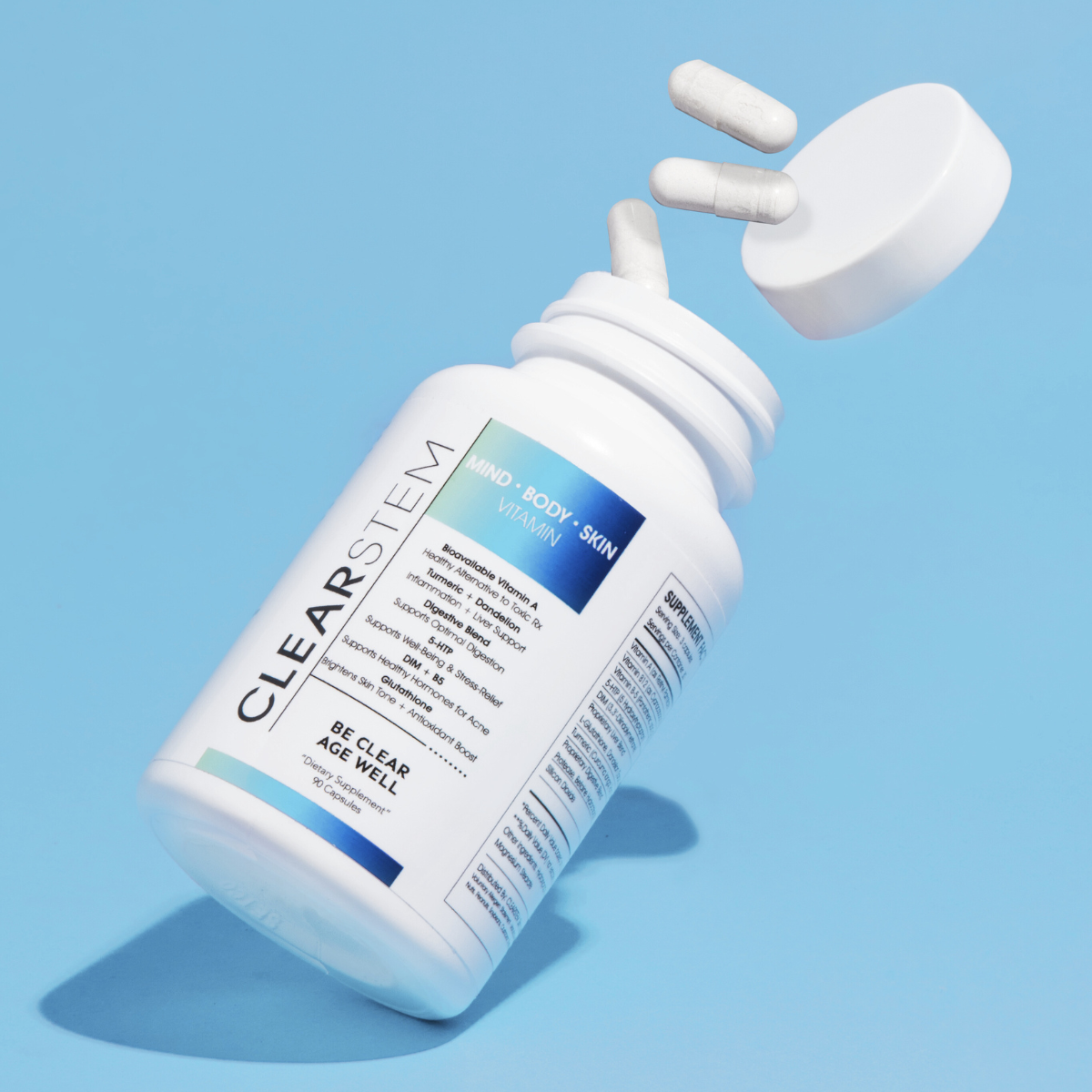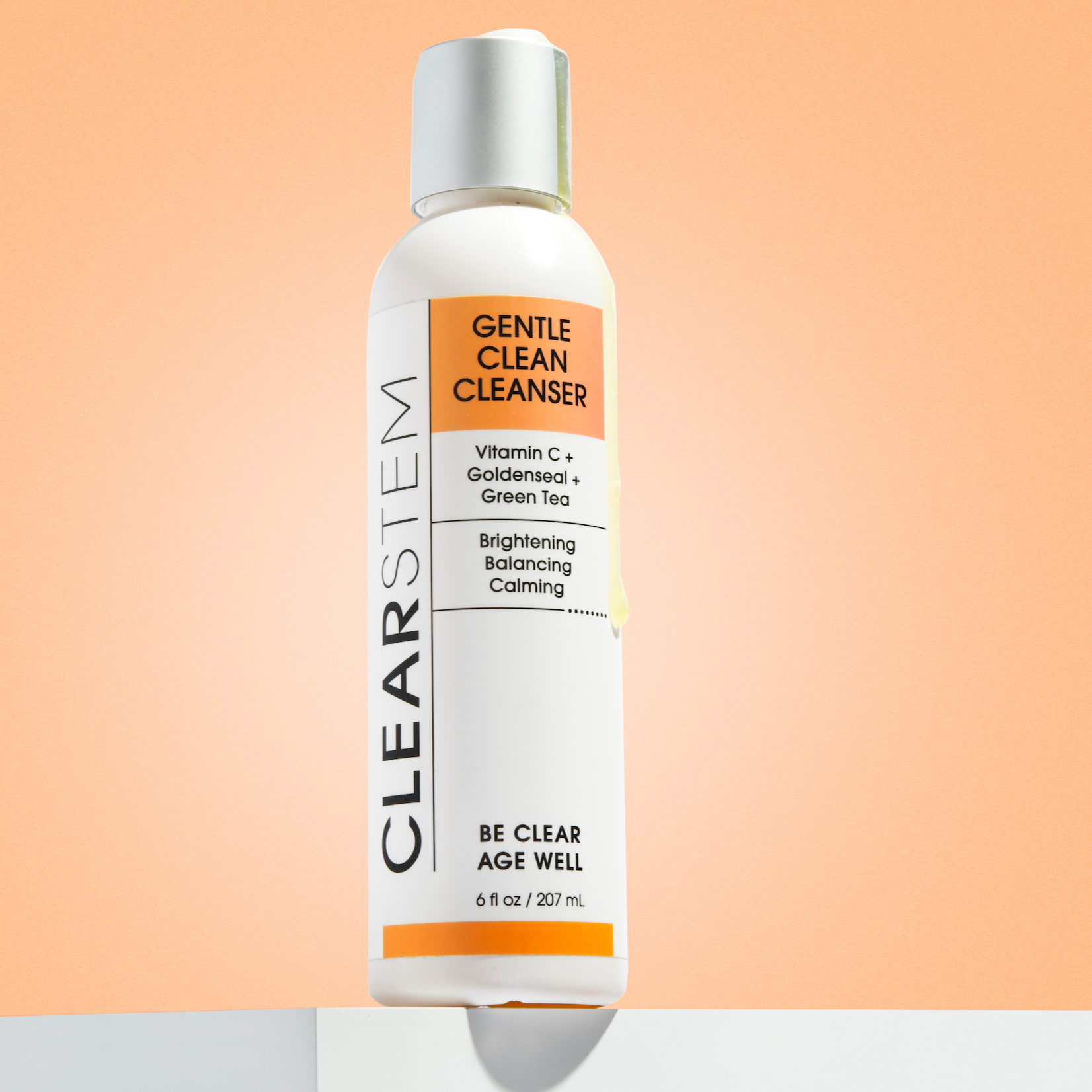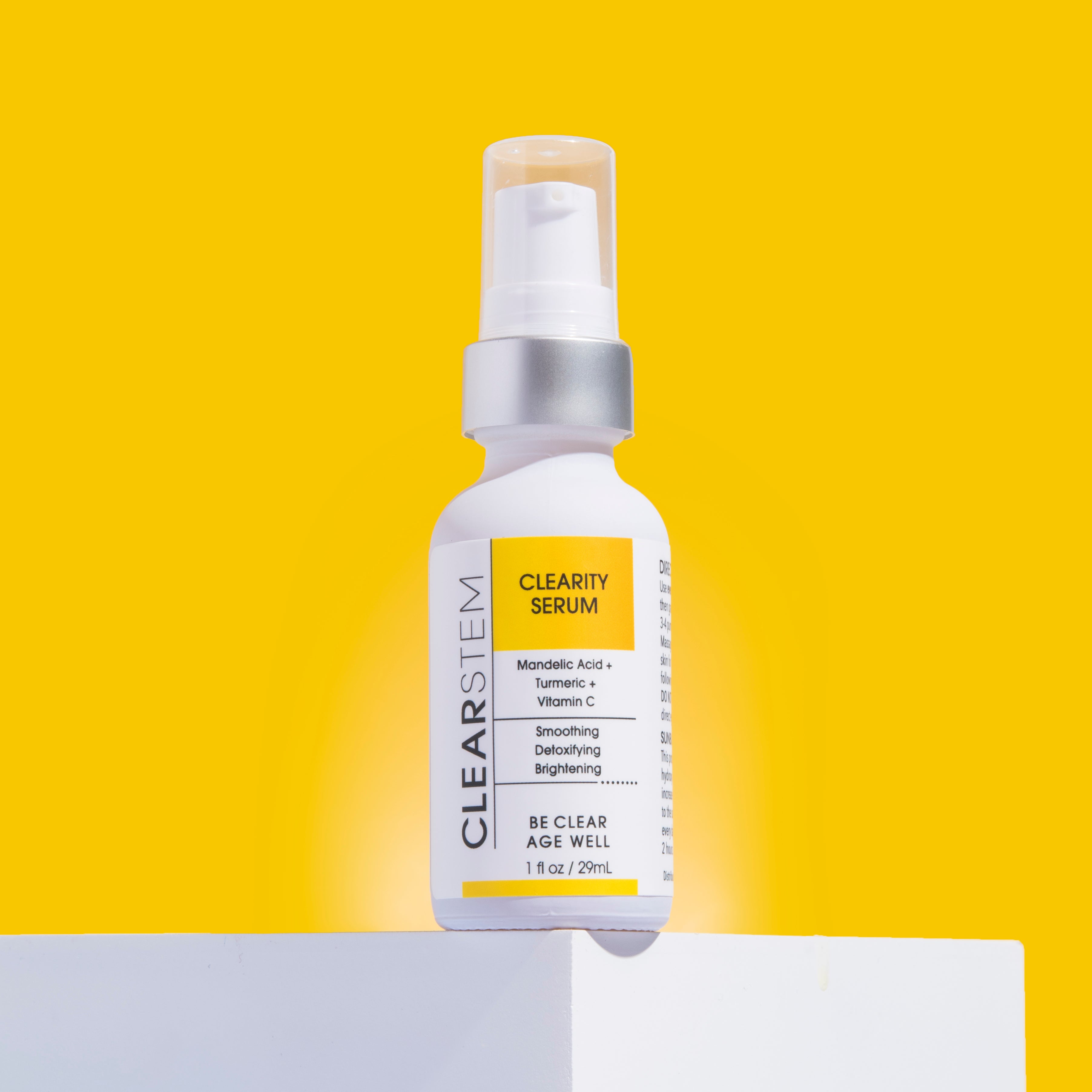The words "acne" and "breakout" are often used interchangeably, usually to describe several different skin issues on the face. However, the reality is that you can have different types of acne on the face, back, and other parts of the body. And while some people are less prone to acne, it is very likely that almost everyone is going to have to deal with some type of acne at some point in their life.
Knowing specifically what type of acne you are dealing with can help you understand how to treat it. In this guide, we’ll explore the different types of acne, how to understand the difference between them, and their treatment options. So whether you are combating common hormonal acne, large acne pustules, or completely different acne types, read on to learn the ins and outs of clearing up your skin.
The Different Types of Acne
There are two main types of acne that you may encounter: inflammatory and noninflammatory acne. And of course, each type has its own subtypes, such as blackheads, whiteheads, pustules, and cysts. Let’s go ahead and take a closer look at these types of acne together, shall we, friends?
Noninflammatory Types of Acne
Non-inflammatory acne means acne that does not cause swelling of the skin. The two types of non-inflammatory acne include blackheads and whiteheads. These types of acne are both considered comedonal acne that results in a mild acne case, and are not normally difficult to clear up in your skin. They include (1 & 2):
- Blackheads, which are also known as open comedones, are caused when your pores become clogged with debris such as dead skin cells and sebum. However, they are open comedones because the pore is not closed off, it still remains open while the inside of the pore is filled with debris.
- Whiteheads, which are also known as closed comedones, are similar to blackheads. They are caused when your pores become filled with debris, but the outer layer of the pore closes this debris inside the pore.
Whiteheads and blackheads can occur in the same areas of the face. As with any type of acne, simply popping or picking at whiteheads or blackheads will not clear them up, and could cause further damage to your delicate skin. Try a sulfur spot treatment that effectively minimizes pimples without drying out your skin.
Inflammatory Types of Acne
Inflammatory acne causes – you guessed it – inflammation of your skin. This type of acne includes pustules, papules, nodules, and cysts. While these types of acne are still caused by pores being clogged by debris such as dead skin cells and sebum, inflammatory acne usually also involves bacteria in the skin that leads to inflammation, redness, and sometimes pain around the acne areas. (2)
Since we are talking about inflammatory acne, we will start with one of the worst types first: acne cysts. Acne cysts can be extremely difficult to heal, and also can be very severe and painful. They may also often lead to scars. Cysts can happen when surface acne is not treated or is treated incorrectly and the cause of the acne, the excess sebum and dead skin cells, end up further down in your skin layers because of damaged hair follicles. (3)
Nodules are similar to acne cysts in how they form and are another severe type of inflammatory acne. In deeper layers of skin, acne is more difficult to treat and can be filled with pus and blood as well as dead skin cells and excess sebum. Nodules may look like a whitehead, but not always, and the horror story here is that this type of acne can form connections under the skin, leading to acne conglobata, or interconnecting acne. (4)
A more moderately severe type of acne is papules, commonly known as pimples. These happen when the debris that causes acne enters into your hair follicles. Pimples mostly occur on the face and can develop into the more severe types of acne above if not treated correctly.
Related to papules, or pimples, are pustules. A pustule is simply a pimple that has started to create pus because of the body’s reaction to the bacteria inside the hair follicle. These can look similar to whiteheads because of the pus involved beneath the skin, but they are normally larger.
How To Identify Each Acne Type
Different kinds of acne can be difficult to identify, but there are some things to look for with each blemish type that can help you find the right treatment option. (1)
- Whiteheads are small bumps on the skin with a white or closer to skin-colored tip. They are not painful and they do not feel hard. You should also not see inflammation or redness around whiteheads.
- Blackheads are very similar to whiteheads in appearance, except the top of the bump will appear darker. They also are not painful and do not feel hard, nor do they cause inflammation and redness in the surrounding skin.
- Papules, or pimples, are swollen red or pink bumps on the skin. These can be sensitive to touch, so they may feel painful, but they do not feel hard. The skin around papules is likely to be inflamed and may be swollen surrounding the papule.
- Pustules look very similar to papules but also include a lighter white or skin-colored top. The surrounding skin may be swollen and inflamed, and pustules may be painful to the touch. When determining your types of acne, try not to touch your face with your fingers! This can lead to more clogging of your pores instead of helping you clear out.
- Nodules, because they are deep within your skin, will not have a head or tip like other forms of acne. Nodules may just appear as a bump beneath your skin that is red and swollen on the nodule itself and the surrounding areas. Nodules are normally painful to the touch and can even cause your skin to feel sore when you are not touching them.
- Cysts show as large, soft, fluid-filled bumps well underneath the skin’s surface. They may also not have a head or tip, but can be identified by redness and swelling around the cyst area. Cysts may appear lighter on the surface if they are filled with pus, or you may see excessive blood under the skin. Like nodules, cysts can cause sensitivity, pain, and soreness in the affected area.
Different Acne Severity Grades
There are three different severity grades normally given to different types of acne: mild, moderate, and severe. The type of acne you are fighting can help determine your severity. If you are dealing with what seem to be only blackheads and whiteheads, these are considered mild forms of acne. They can usually be healed easily with a good regimen of over-the-counter acne fighters. (5)
Pustules and papules are in the moderate family of severity when it comes to acne. These types of acne are not likely to leave scarring if treated properly, and can often be cleared up with over-the-counter methods and simple routines.
Nodules and cysts are the most severe type of acne. These types of acne should be dealt with with the help of a dermatologist, as they are likely to cause scarring and deformation of the skin, and are usually located in the facial area. Nodules and cysts may also be painful and can lead to further infection of the body if not treated properly.
Different Acne Stages
The different types of pimples and different types of acne can also be considered the different acne stages. Acne almost always starts as mild acne in the form of blackheads and whiteheads. If left untreated, these types of acne can progress to the more moderate pimples and pustules, and if the condition continues to worsen, these can develop into the more severe nodules and cysts.
What Different Types of Acne Mean
Despite the consensus of mean girls everywhere, acne has nothing to do with hygiene. So don’t assume that someone who has acne is simply a dirty person, because this simply isn’t true. Acne can affect anyone at any time, although it more often affects teenagers going through hormonal changes, and women in certain time periods when their hormones are fluctuating more. Research shows a connection between the liver and acne, indicating that our internal body systems impact our overall skin health. So while some forms of acne may indicate that you waited too long to treat the acne you are dealing with, they do not mean that you are unhygienic. (6)
What Causes Acne?
The simple answer here is hormonal fluctuations in the body cause that acne. That’s why people experience adult acne. However, many factors contribute to hormonal fluctuations or imbalances within the body such as underlying toxicity, sluggish liver, and poor gut health to name a few. To get a deeper understanding of these imbalances, the CLEARSTEM Functional Lab Test can be instrumental. This customized test evaluates markers commonly out of range for those with acne, touching on categories like stress, hormones, possible infections, and more. By identifying specific imbalances in the body, you can get a clearer picture of what might be contributing to your acne.
These hormonal fluctuations cause the skin cells to produce an excess of sebum, or oils. This, combined with other factors like environment, cleansing routine, and even stress levels, can all combine to bring those terrible unwanted bumps to your skin. (1)
How To Treat Different Types Of Acne
The way that your acne will be treated should depend on the type and severity of the acne on your skin. If you believe you are dealing with more than the mild acne types of whiteheads and blackheads, it may be better to contact a dermatologist before moving forward with an acne medication. Below, we’ll explore treatment options for each type of acne. If you are prone to breakouts, you should be looking for non-comedogenic products, even when you have clear skin.
Treatment Options for Whiteheads
Treatment for whiteheads can be as simple as a good over-the-counter topical application that includes benzoyl peroxide. If your skin is overly sensitive to benzoyl peroxide, try more natural products with salicylic acid and other types of acids and cell renewal components, such as our VITAMINSCRUB Antioxidant-Infused Scrub Cleanser, which can also aid pores by exfoliating away excess dead skin cells.
Treatment Options for Blackheads
Treatment for blackheads is similar to whiteheads. Adding in a non-comedogenic serum that contains mandelic acid can promote skin cell turnover and may help to keep the sources of acne from building up on your skin.Try our CLEARITY "The Blackhead Dissolver" serum to add to your normal routine.
Treatment Options for Acne Papules
Papules can also be treated with over-the-counter products that are helpful for blackheads and whiteheads. However, if this treatment does not seem like it is helping your pimples, adding in a product with alpha-hydroxy acids, such as our PREGAME Face Mask x Jess Clarke.
Treatment Options for Pustules
Pustules can be treated much the same as papules. The key with all of these types of acne is to prevent yourself from wanting to pick or pop them with your fingers. Especially with pustules and papules, it is important to stay hands-off. Touching these blemishes can force the debris that causes them further into your skin, leading to nodules and cystic acne that can cause scarring. For deep cleansing – and to stay hands off! – try our CLEARSTEM Clear Skin Kit. (7)
Treatment Options for Nodules
Of the different types of acne and how to treat them, nodules are the ones that you likely want to consult a professional for. Because they are so deep below the skin and can lead to scarring if not treated properly, nodules should be left to a dermatologist since more specific, individualized treatment will likely be necessary.
Treatment Options for Cystic Acne
Just as with nodules, cystic acne should be diagnosed and cared for by a professional to prevent further infections or scarring of the face. In the meantime, adding a great supplement such as our MINDBODYSKIN Hormonal Acne Supplement may help new breakouts from appearing and adding to your skin complications.
If you’re experiencing ANY type of acne it’s extremely important to check your skincare products for pore-clogging ingredients and also avoid eating common acne triggers such as dairy, gluten, eggs, soy, excess sugar, and excess caffeine. Check out our full post on the anti-acne diet.
How Long Does It Take for Acne to Go Away?
It is important to understand that no acne can be cleared up immediately. While small occurrences of bumps and blemishes can be made less visible sometimes within 24 hours, for more widespread or severe cases of acne, it can take up to two months to begin seeing results from topical medications and supplements. If you have been attempting to clear your acne for longer than two months with no progress, it may be time to talk to a dermatologist. (8)
Is Acne Treatment Safe for People Who Are Pregnant?
Different types of acne can happen to anyone at any time, and different types of acne on the face can be more likely to occur during pregnancy. Some types of topical acne treatments have not shown any adverse effects when used by women during pregnancy, though use of retinoids can be harmful to the unborn baby. If you are pregnant, we suggest chatting with your doctor about any potential acne treatments before beginning. (9)
Our Best Tips for Managing Acne
A gentle and simple skincare routine free of pore-clogging ingredients is always the best place to start, which can help clear mild and moderate acne when followed regularly. Let the well-balanced and well-made products for acne scars at CLEARSTEM Skincare help you get a handle on your acne today. Regular washing, moisturizing, and toning with non-comedogenic products, as well as keeping up a good sunblock regimen, can be a first good step to clear, happy skin!
Sources:
Source 1: What is Acne? Definition & Types https://www.niams.nih.gov/health-topics/acne
Source 2: Acne: Overview https://www.ncbi.nlm.nih.gov/books/NBK279211/
Source 3: Cystic Acne: What Is It, Symptoms, Causes and Treatment https://my.clevelandclinic.org/health/diseases/21737-cystic-acne
Source 4: Acne Conglobata https://www.ncbi.nlm.nih.gov/books/NBK459219/
Source 5: What can clear severe acne? https://www.aad.org/public/diseases/acne/derm-treat/severe-acne
Source 6: Hormonal treatment of acne vulgaris: an update https://www.ncbi.nlm.nih.gov/pmc/articles/PMC5015761/
Source 7: Skin care for acne-prone skin https://www.ncbi.nlm.nih.gov/books/NBK279208/
Source 8: 9 things to try when acne won’t clear https://www.aad.org/public/diseases/acne/diy/wont-clear
Source 9: Management of severe acne during pregnancy: A case report and review of the literature https://www.ncbi.nlm.nih.gov/pmc/articles/PMC5555287/










